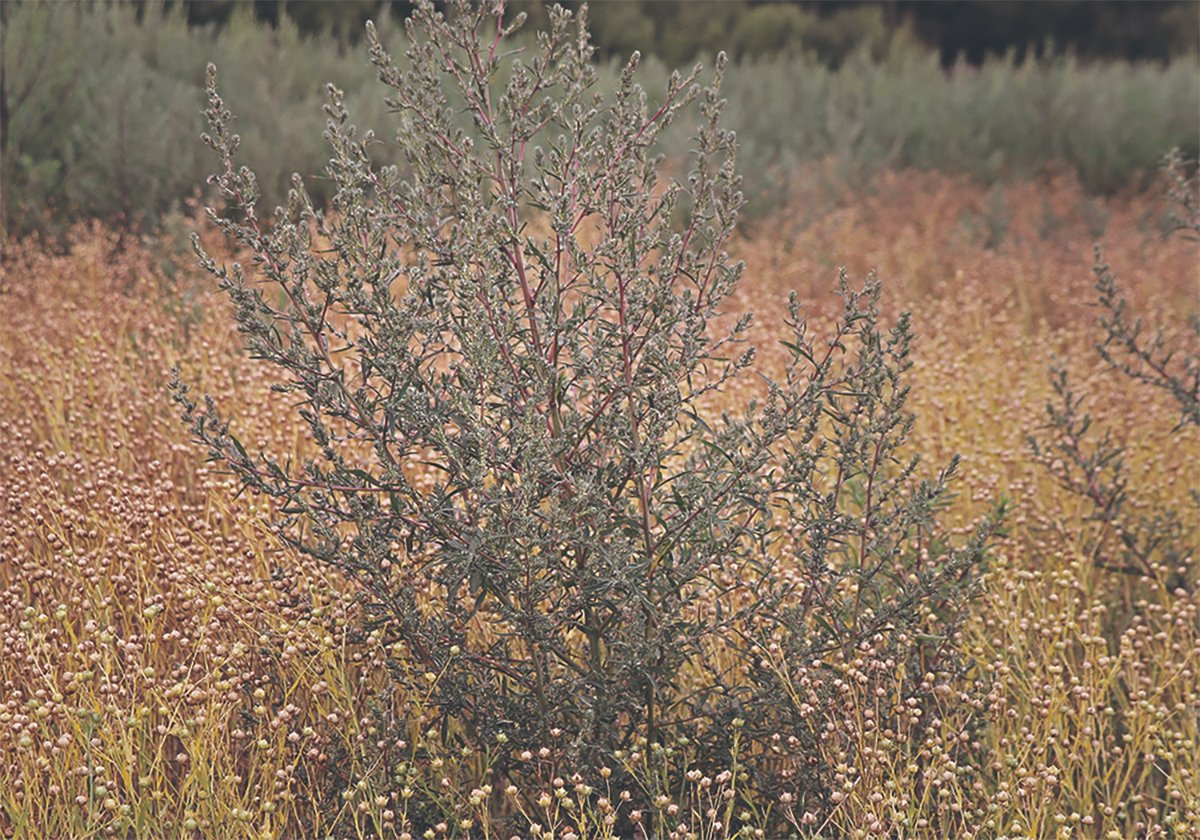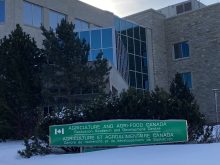Thank you
This drought has brought much worry and suffering to the farmers of
Western Canada, especially our livestock producers.
But it has also brought forth an unprecedented show of neighbourliness
not seen since the 1930s from our eastern farmer friends.
Their show of support by donating hay is very much appreciated by those
receiving it.
Although those in the East cannot supply all the feed so desperately
needed on the drought-stricken prairies, a great big thank you is
Read Also

Kochia has become a significant problem for Prairie farmers
As you travel through southern Saskatchewan and Alberta, particularly in areas challenged by dry growing conditions, the magnitude of the kochia problem is easy to see.
extended to all of them for trying to help.
Hopefully those who will not receive hay will get help in some other
way like adequate funds from the government with which to purchase feed.
It is unfortunate that both our provincial (Saskatchewan) and federal
governments are not fully aware of the economic impact of this drought
on the whole of Canada’s agribusiness. Do they realize that this
drought is not manmade?
The genuine concern and real aid of the people from Ontario and the
other eastern provinces will do more for Canadian unity and goodwill
than all the empty rhetoric of all our politicians.
– Naden Hewko,
Cactus Lake, Sask.
Fair market
This letter is in response to the letter attached to the recently
received adjustment payment for the current crop year of wheat and
barley.
In the pool return outlook for June 2002, the Canadian Wheat Board
lowered the price outlook for wheat and barley in the coming crop year
2002-03 for western Canadian farmers. The same day red spring wheat
rallied 17.5 cents US or 27 cents Canadian.
The same futures have now rallied from about $3 US per bu. to $4 US per
bu. How can the CWB be so wrong with all their market intelligence and
information systems accesses?
In other non-CWB crop this represents an immediate opportunity to lock
in attractive crop prices and hedges into the future.
Was the CWB short and had to protect its position or did the dramatic
changes in global wheat prices come as a total surprise?
An open market milling wheat price of $5.25 to $6 per bu. cash (not
part 15 months later) from the combine delivered to most western
Canadian grain terminals, without any restrictions or wheat agency
regulations, would be reality and prices could rally further depending
on final harvest results around the globe.
It is about being able to participate every so often in much better
prices from the marketplace and apply good risk management to capture
exceptional margins, which enables us to stay in the business of
agriculture.
Yes, we will watch carefully how much extra value the CWB monopoly will
extract from the marketplace for farmers in this extraordinary
marketing year coming up.
To that extent this was the message the standing committee on
agriculture wanted to transmit when it suggested western grain growers
needed more marketing freedom in barley and wheat.
This also in the face of clear demands and serious pending action by
Alberta on marketing choice for its farmers.
The CWB must make more meaningful changes in risk management and quick
flexible reaction to the constant dramatically shifting and never
staying the same global grain and food business environment or they are
not going to survive.
This will not just come about a political decision in Ottawa, but the
inability of the CWB to procure the grain at competitive prices from
farmers because of other choices in the marketplace.
Look to barley, where the CWB lost the marketing edge and cannot get
the product to cover the international demand.
– Leo Meyer,
Woking, Alta.
Appalled at NISA
I agree entirely (with the Aug. 8 WP editorial.) As a farmer and a farm
accounting practitioner, I am appalled to see the Net Income
Stabilization Account being used as a farm aid distribution vehicle.
Over 95 percent of the benefits of the United States farm bill go to
grains and oilseeds farmers, yet the Canadian response is to give aid
even to those farmers who indirectly benefit from the lower feed grains
prices resulting from the U.S. farm bill.
By using NISA in this way, the Canadian government, in many cases, will
be paying farmers to eat a free lunch provided by the USDA.
Furthermore, even though I haven’t seen any of the revised NISA “DWON”
forms, I think that, based on my experience as an accounting
practitioner, many of my clients are going to have a significant income
tax problem.
In my case, I triggered a withdrawal for 2001, and was able to withdraw
about 70 percent of what the government contributed to my account.
Therefore, the way the numbers work, I already have about $3,500 more
in NISA income than I actually received. I am paying income tax on
$3,500 which I never received because it is locked in NISA.
I called NISA to confirm this, but I wasn’t completely satisfied with
the answer, so I will have to wait to see my DWON when it comes from
NISA.
In addition, normally the government contributes money to NISA to match
the farmer’s contribution. Many people, including myself, have some
concerns that this NISA money won’t be contributed by the government
unless, and until, the farmer makes his contribution first. Again, we
will have to wait to see the DWON forms.
Finally, for those farmers who did not trigger any NISA withdrawal in
2001, any extra NISA contributions will simply go into the fund to be
triggered some future year. I suspect that any additional government
contribution to my 2001 NISA account will simply add to my taxable
income, which I can’t get to.
– Stephen Thompson,
Clinton, Ont.
Hay and humanity
To have farmers from an area of Canada which was uttered by many of
Alberta’s leaders to “freeze in the dark,” and that certain of their
citizens, referred to as “creeps and bums,” were not welcome here;
donate some of their hard-earned hay to our Alberta farmers, is a
demonstration that humanity can be a wonderful and marvelous thing.
These were not necessarily the opinion of the residents of Alberta, but
in fairness, we should have also been painted with a wide brush. In any
case, a hearty thank you to those who made this all possible.
I believe it to be an event such as this which may change this
right-winged dog-eat-dog mentality of this Alberta government, which
believes it has the mandate to change the whole social agenda of
Canada.
For profit everything, in spite of the fact some services should be
provided at cost or at least be regulated.
Ralph Klein’s recent response to this hay shortage problem was to
encourage the southern Alberta farmers to be compassionate, and not to
gouge the farmers who have a feed shortage.
May I suggest that Epcor, Enron and Atco, among others, be
compassionate and stop their gouging as well. It’s difficult to tell
which dog took the first bite.
– Doug McGowan,
Nanton, Alta.
Guest irresponsible
(Re: Barb Glen column, Aug. 8. Canadian athlete Kelly) Guest is
irresponsible and should have all his competition rights taken away.
With a remark that he didn’t think twice about, not only did he do harm
to the industry but he did harm to my family’s and my neighbours
family’s welfare.
With comments like his, the public only hear what they want to hear,
not necessarily the truth so there is a large number of the public who
will believe and go on believing that beef contains nandrolene, no
matter how many times they are told it does not.
– Bill Brinley,
Wroxton, Sask.
Science methods
(Jeff) Wilson and his colleague Doug Powell from the University of
Guelph promote the fact that when offered the choice, consumers more
often than not pick genetically modified corn or sweet potatoes.
In this story, (WP, July 11) by not providing the researcher’s data and
methodology, you are, I am assuming, hoping that the majority of
readers will simply accept blindly the ‘facts’ that Powell’s science
produces, like most conventional science, reductionistic and totally
manipulatable data that with statistics can ‘prove’ anything the
researcher and possibly the funders want it to prove.
However, there are a growing number of people who are questioning not
only the ‘data’ assembled in this type of research and reporting, but
also the short term ignorance of any certification body who gives a
farm site ‘organic’ status when the farm openly grows GM crops.
Organic has a zero tolerance to GM and you can’t keep seed purity
separate by growing them in close proximity. Farmers know this fact but
alas, our government agencies and many researchers don’t seem to see
the statistical or monetary significance for keeping GM away from
organic seed.
Thankfully there is more to science than the jargon we’ve been
spoon-fed for far too long and there is a whole lot more to the
millennium of organic growing practices than planting an ‘organic’ plot
next to GM plot.
Most unfortunately the significant differences aren’t reported in our
mainstream papers but most fortunately still exist.
– Sharon Rempel,
Edmonton, Alta.
Repeat history
This information given to me by an older farmer today should be made
known to government officials and especially struggling farm
families…. In approximately 1934 an act of Parliament called the farm
department adjustment act, or something similar, to aid struggling
farmers.
Federal and provincial government officials sit down with the banks,
money lenders, mortgage holders or whoever to see what can be done to
interest and principal payments to be overlooked for that disaster
year. A moratorium is then set up especially for land and breeding
stock.
I believe this has to be overseen through an Order of Council in
government, approved by … the prime minister.
I believe this should be looked into in light of the agricultural
situation in the prairie provinces.
– Nick Parsons,
Farmington, B.C.
















